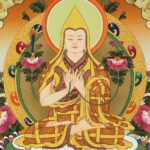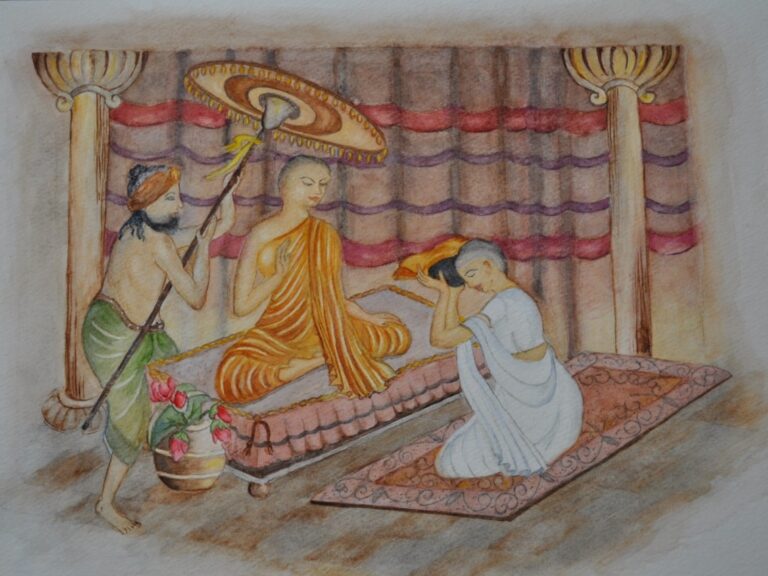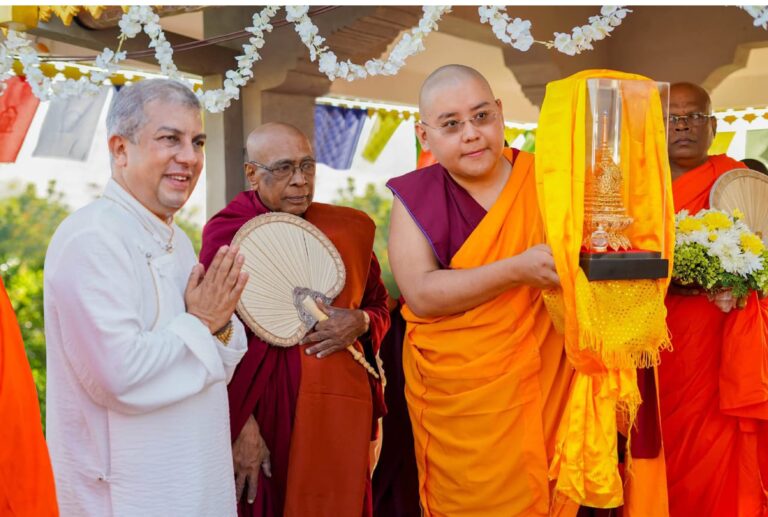Padmasambhava: The Mystic Who Brought Buddhism to Tibet If you’ve ever explored Tibetan Buddhism, you’ve probably come across the name Padmasambhava—or maybe Guru Rinpoche, which means “Precious Guru.” To many, he’s a spiritual superhero, a miracle worker, and even a second Buddha. But who exactly was this legendary figure? And why is he so deeply …
Padmasambhava: The Mystic Who Brought Buddhism to Tibet
If you’ve ever explored Tibetan Buddhism, you’ve probably come across the name Padmasambhava—or maybe Guru Rinpoche, which means “Precious Guru.” To many, he’s a spiritual superhero, a miracle worker, and even a second Buddha. But who exactly was this legendary figure? And why is he so deeply revered across the Himalayan region?
Let’s dive into the fascinating life and legacy of Padmasambhava—the mystic master who changed the spiritual landscape of Tibet forever.
A Birth Like No Other
Padmasambhava’s story starts in the most magical way. According to legend, he wasn’t born in the usual sense. Instead, he appeared fully formed as an eight-year-old child on a lotus flower in the middle of Lake Dhanakosha, in what’s now believed to be part of modern-day in Pakistan.
Because of this miraculous origin, his name means “Lotus-Born.” Raised by a local king as a prince, Padmasambhava eventually left palace life behind to pursue deep spiritual practice. He wandered through India, learning from powerful teachers and mastering esoteric Buddhist teachings, especially Vajrayana (Tantric Buddhism).
Invited to Tibet
In the 8th century, the Tibetan King Trisong Detsen wanted to bring Buddhism to his kingdom. But something—or many things—kept going wrong. Legend says local spirits and demons were wreaking havoc, preventing the construction of Tibet’s first monastery.
The king invited Guru Padmasambhava to Tibet, hoping he could solve the problem. And solve it he did. With fierce mantras, rituals, and his unshakable spiritual power, Padmasambhava is said to have tamed these chaotic forces—turning them into protectors of the Dharma (the Buddha’s teachings).
Founding Samye Monastery
With the path cleared, Tibet’s first monastery—Samye—was completed around 775 CE. It wasn’t just a religious building; it became the heart of Tibetan Buddhism. Alongside the Indian scholar Shantarakshita, Padmasambhava helped train monks and translate sacred texts into Tibetan.
Samye marked the beginning of a new spiritual era for Tibet, blending Indian Buddhism with indigenous beliefs. This fusion laid the foundation for the Nyingma tradition, the oldest school of Tibetan Buddhism.
Teachings, Treasures, and Hidden Wisdom
Padmasambhava wasn’t just a teacher—he was a mystic with deep understanding of the mind and reality. He taught advanced Vajrayana practices and introduced Dzogchen, a profound system of meditation aimed at realizing the nature of mind itself.
But what makes him truly unique is his legacy of terma, or hidden teachings. These are spiritual “time capsules” he concealed in rocks, caves, texts, and even in the minds of future disciples. Throughout history, special masters called tertöns have uncovered these treasures, keeping Padmasambhava’s wisdom alive across centuries.
Icon and Inspiration
Padmasambhava’s image is instantly recognizable: seated on a lotus, wearing a tall lotus hat, holding a vajra and a skull cup, with a gaze that says, “I see everything.” Sometimes he appears in different forms—peaceful, fierce, or regal—depending on what the situation calls for. These are called his eight manifestations, each symbolizing a different type of enlightened activity.
To this day, people across Tibet, Nepal, Bhutan, and northern India visit caves and temples linked to him. His presence is felt not just in statues or texts, but in daily practice, mantras, and stories passed down for generations.
Why He Still Matters
Padmasambhava isn’t just a figure from the past. For millions, he’s a living source of blessing and guidance. Many practitioners believe that by calling his name—especially through the mantra “Om Ah Hung Vajra Guru Padma Siddhi Hung”—they can receive his protection and insight.
Whether you view him as a historical figure, a spiritual archetype, or a force of nature, there’s no denying Padmasambhava’s power. He didn’t just bring Buddhism to Tibet—he transformed it, planting seeds of wisdom that continue to bloom to this day.
Did You Know?
Every month, on the 10th day of the Tibetan lunar calendar, followers celebrate Guru Rinpoche Day. It’s a time for prayer, meditation, and honouring the Lotus-Born master.
Curious to go deeper? You might want to visit some of his sacred sites—like the Tiger’s Nest Monastery in Bhutan—or explore Dzogchen teachings through books and authentic teachers. Wherever your journey takes you, Guru Rinpoche’s wisdom is always just a mantra away.
The Departure of Padmasambhava
Rather than passing away, Padmasambhava is believed to have departed for a pure land called Zangdok Palri (Sanskrit: Padmakara’s Pure Copper-Colored Mountain), a celestial realm beyond ordinary perception. This realm is said to be located in the southwest, and only those with high spiritual realization can see or access it.
According to legend, before his departure, Padmasambhava entrusted his final teachings to his closest disciples, especially Yeshe Tsogyal, and gave prophecies about future events and where hidden teachings (terma) would be found.
Some traditions describe this event as him riding off into the sky, surrounded by light and accompanied by dakas and dakinis (enlightened beings), symbolizing his complete mastery over life and death.
Get in Touch with Us
We’d love to hear from you—share your thoughts or ask a question!






